The gist: pioneered by an Australian traveller in León, Nicaragua, volcano boarding is the art of zooming down the face of an active volcano on a reinforced plywood toboggan. Using your heels to brake and steer, it’s possible to clock speeds of up to 90km/hr. That’s after you’ve hiked up the volcano, of course.
Where to try it: León Big Foot Hostel (www.bigfootnicaragua.com/volcanoboarding) runs trips to nearby Sierra Nevada volcano daily.
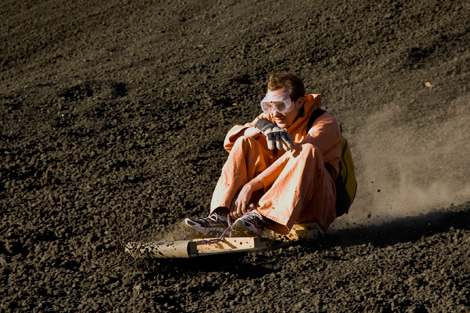
The gist: using a whirlybird to access untouched terrain, heli-skiing is quite technical, and you’ll get more bang (or in this case, powder) for your buck if you’re an advanced skier or snowboarder.
Where to try it: widely banned in Europe, heli-skiing is popular in North America and New Zealand. Alaska’s Chugach Mountains boast some of the world’s deepest, softest powder.
The gist: inspired by Vanuatu’s ritualistic land divers, the modern sport of diving off a ledge while attached to a safety cord was popularised by Kiwi entrepreneur AJ Hackett.
Where to try it: Hackett-owned Macau Tower (www.ajhackett.com/macau) boasts the world’s highest commercial jump point (233m), but the original Kawarau Bridge Bungy (www.bungy.co.nz/kawarau-bungy-centre) in Queenstown (43m) and Victoria Falls Bungee (www.victoriafallsbungee.com) in Zambia (111m) are more scenic.
The gist: a type of performance art in which people iron clothes in remote locations, ‘EI’ purports to combine the thrill of an extreme sport with the satisfaction of a well-pressed shirt.
Where to try it: from mountain peaks to the depths of the ocean, the world is your EI oyster – just don’t forget to post your feat on the sport’s Facebook page (www.facebook.com/ExtremeIroningOfficial).
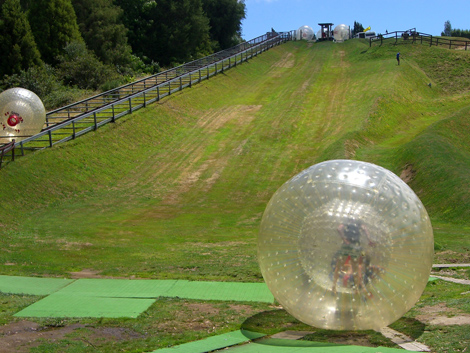
The gist: Another Kiwi invention, zorbing (also known a sphereing, orbing and globe-riding) is the act of rolling down a hill in a transparent plastic ball. Opt to zorb solo, with friends, and/or with water – all in the name of fun.
Where to try it: the original zorb company (www.zorb.com/zorb) has arms in Rotorua, the USA and Guam, but you’ll find copycat outfits all over the world.
The gist: ice climbers ascend ice formations, such as frozen waterfalls, with the help of ice axes and other special climbing equipment.
Where to try it: opened in 1995, Colorado’s Ouray Ice Park (ourayicepark.com) was the world's first park devoted exclusively to the sport, but it’s also big in Canada – enthusiasts rave about Quebec’s Val David.
The gist: a fusion of wakeboarding, surfing, windsurfing, paragliding and gymnastics, kiteboarders use what’s known as a power kite to propel themselves across the ocean while standing on a specially designed board.
Where to try it: perennially windy beaches – from the UK’s Camber Sands (www.thekitesurfcentre.com/kitesurfing-lessons-camber-sands-school) to Kailua Beach on O'ahu, Hawaii and El Gouna, Egypt – are ideal.
The gist: originating in Gloucester, England, in the 15th century, this injury-prone activity sees participants charge down a steep hill in pursuit of a round of cheese.
Where to try it: Gloucester’s annual Cooper’s Hill Cheese Rolling is the world’s largest competition, but many other countries, including Canada (www.canadiancheeserolling.ca), host their own annual events.
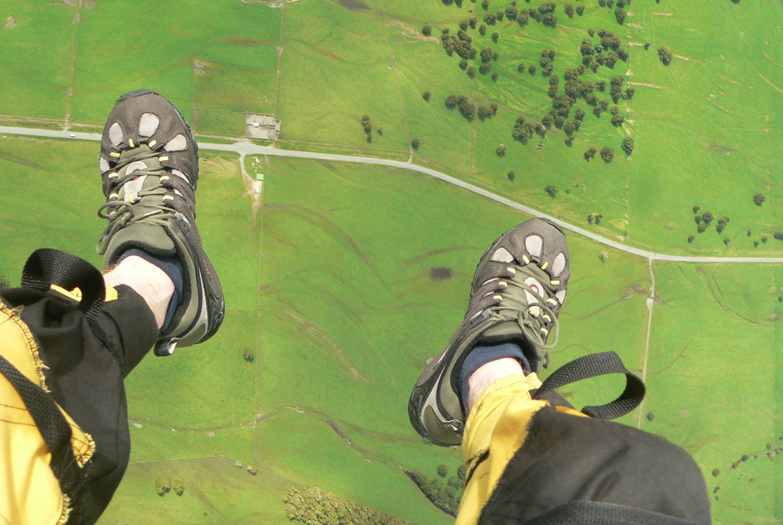
The gist: forget hang-gliding and paragliding – there’s nothing like the rush of jumping from a place at 10,000ft. Just about anyone can tandem skydive, but sky surfing, wingsuit surfing and BASE jumping are best left to pros.
Where to try it: choose an idyllic natural setting like Byron Bay, Australia (try www.skydivebyronbay.com) or the Swiss Alps (see www.skydiveswitzerland.ch).
The gist: climbing has become so popular it was considered for the 2020 Olympics. The newest craze is bouldering, which means climbing without safety equipment.
Where to try it: popularised in North America, indoor bouldering centres (with low walls to minimise injuries) can now be found everywhere from Great Britain to Germany. Outdoors, try Rocklands, South Africa (www.rocklandsboulders.com) and Bishop, California (www.bishopbouldering.info).
The gist: first attempted on the Zambezi River below Victoria Falls in 1981, white water rafters navigate rapids graded from one to five (anything higher is considered unraftable) in an inflatable boat.
Where to try it: some of the world’s most scenic grade five rapids are found in the Zambezi River (near Livingstone, Zambia), the Suarez River (near San Gil, Colombia) and Nepal’s Sun Kosi River.
The gist: northern Europeans have been partial to an icy dip between sauna sessions for centuries, but the more modern International Ice Swimming Association (www.internationaliceswimming.com) deems an official ice swim as a one-mile paddle in water below 5°C.
Where to try it: Finland and the USA have their own ‘polar bear’ clubs, but if you want to make your first solo swim official, register your witnessed attempt with the IISA.
The gist: a hybrid of surfing and several board sports, flowboarding is the art of riding an artificial ‘sheet wave’ on an apparatus that looks a bit like a skateboard.
Where to try it: since the sport gained traction in the ‘80s, ‘flowhouses’ are popping up around the globe – Flowhouse (www.flowhouse.co.uk) operates centres in Bangkok, New Jersey and Yorkshire, England.
The gist: often included as part of an eco-tour, zip-lining is the act of traversing an incline via a pulley attached to a suspended cable. Zip lines are also known as zip slides and flying foxes.
Where to try it: Costa Rica’s Selvatura Park (www.selvatura.com/tours-activities/zip-line) zip tour is breathtakingly scenic, but daredevils are better suited to the world’s longest, fastest zip-line: the Zip 2000 (www.zip2000.co.za) in Sun City, South Africa.
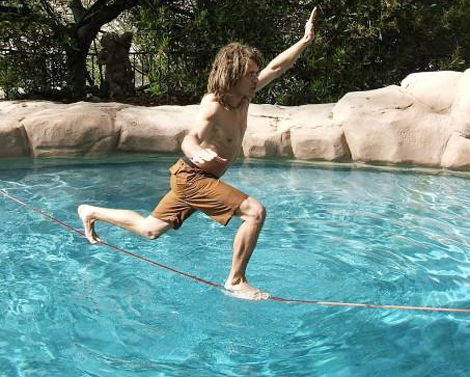
The gist: proponents call this evolution of tightrope walking, in which participants manoeuvre across a strip of nylon held taut between two anchor points just above the ground. It might not look particularly extreme, but it’s very tough (and great core exercise).
Where to try it: join a meetup group in Vancouver (www.meetup.com/Slacklining) or DIY with your own slackline (shop online at www.gibbonslacklines.com). Particularly agile? Look into slacklining yoga across the USA (www.yogaslackers.com).
The gist: launched in 1959 as a mode of on-snow transport, modern snowmobiles (also known as sleds) are more commonly used for extreme trail riding.
Where to try it: Michigan’s Upper Peninsula offers some of the best terrain around, but you'll be spoiled for choice with winter snowmobiling tours at alpine resorts across the USA and Canada.
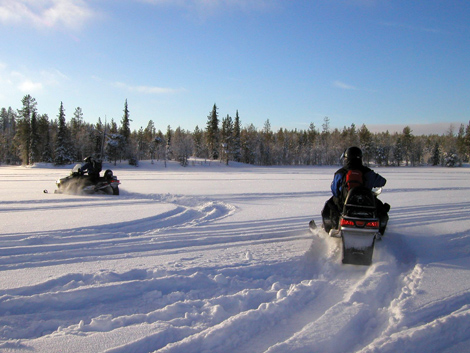 'Snowmobiles' by timo_w2s. CC BY-SA 2.0.
'Snowmobiles' by timo_w2s. CC BY-SA 2.0.
The gist: also known as canyoneering and river trekking, this sport encourages participants to use a variety of techniques including climbing and rappelling to traverse scenic canyons.
Where to try it: canyoning is traditionally performed on a mountain with flowing water – there are plenty in Germany, France, Ecuador, Colombia and Norway.
The gist: drawing on swimming, climbing, scrambling and diving, this activity requires participants to traverse the intertidal zone of a rocky coastline on foot or by swimming, without the aid of watercraft.
Where to try it: popularised on the cliff coastline of Pembrokeshire in Wales during the 90s, coasteering simply requires a suitably rocky coast.